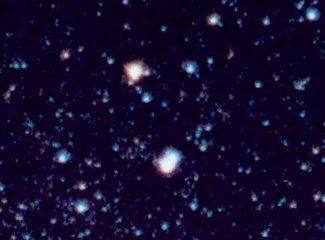
 |
Omicron 1 (the lower of the two bright stars) and Omicron 2 (upper) show the orange colors of class K giants. Just barely up and to the right of Omicron 1 lies contrasting white (almost blue in the photo) 30 Cygni, a class A5 dwarf. To the left and a bit up from Omicron 2 is a reddish star, U Cygni, a class R (carbon-type) Mira (long-period) variable. |